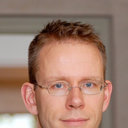Genetic and environmental risk factors for testicular cancer.
Słowa kluczowe
Abstrakcyjny
Germ-cell testicular cancer has a well-characterized descriptive epidemiology, whereas the aetiology remains largely unknown. It is believed that exposures acting prenatally are instrumental to germ-cell cancer development, although no specific exposure has been identified. Several epidemiological studies have investigated a number of indicators of prenatal exposures, such as birth order, gestational duration, birth weight, maternal age and nausea during pregnancy, but results are inconsistent. This paper briefly reviews the current support for genetic and environmental factors in testicular cancer aetiology. In particular, we have summarized the evidence suggesting a strong role of inherited susceptibility, which is probably carried by the effect of several unknown moderate-risk genes. We have illustrated inconsistencies in the previous studies on prenatal factors by estimating the heterogeneity and pooled odds ratios among twelve studies investigating the association between low birth weight and testicular cancer. We have discussed the possibility that puberty is another time window during which environmental factors may increase the risk of testicular cancer. Finally, we have reviewed the results from studies on cryptorchidism and impaired fertility in relation to risk for testicular cancer. In conclusion, we propose that future aetiological studies on testicular cancer should take postnatal exposures acting during puberty into account and, whenever possible, investigate both main effects and interactions among prenatal factors, genetic factors and postnatal factors.


